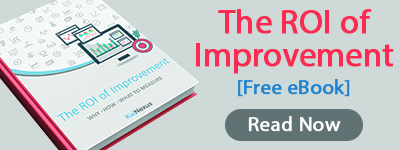Introducing any new software solution to an organization is a challenge. There are generally technical issues and adoption obstacles to overcome. The deployment of Lean software adds an additional level of complexity to the mix because it involves more than just a new tool. It also involves a new way of thinking about organizational improvement and cross functional collaboration. Of course, we think it is worth the effort. We’ve assembled a few tips that have helped our clients successfully integrate Lean software into their organization’s way of life.
Context
Setting the stage for Lean software is particularly important if your organization is new to the Lean business process methodology. Everyone in the organization must understand the basic principles of Lean and have a clear grasp of why the organization is embracing it. Providing a software tool alone is not enough to get people excited about contributing and resolving opportunities for improvement. People need to know how the approach to improvement fits in with the company strategy and business goals - and how it can help them make their jobs better.
Executive Support
Although the Lean methodology is both a top-down and bottom-up approach to improvement, strong executive support is crucial to the adoption of technology designed to support it. Leaders should frequently reinforce its importance and actively demonstrate how the tool influences decision making. When possible, reports from the solution should be shared widely and used to illustrate the impact of improvement.
Training
Modern Lean software should be easy to use, but that doesn’t mean that team members don’t need training. In addition to being taught how the tool works, employees should be coached on exactly how they are expected to use it in the context of their job. Examples should be provided to give them a sense of how the solution will be used on a day-to-day basis. We also recommend avoiding the one-and-done approach to training. There should be processes for training new hires and for refreshing the skills of all employees on a regular basis.
Usage Monitoring
Once the solution is deployed and the team is trained, it is important to track usage patterns to see which employees and departments are active users. Those who are should be recognized and rewarded for their contributions, while those who are not should be coached and encouraged. Managers should be held accountable for the participation of their team. It is particularly important to stay on top of this early while people are still trying to decide if the organization is seriously committed to Lean and the software that supports it.
Early Wins
The truth is that people will use software tools when they make their lives easier. Once they see opportunities for improvement that are captured, managed, and resolved within the solution, they will be more inclined to engage. Be sure to find and broadcast those early successes.
Lean software contributes meaningfully to the success of many organizations. A thoughtful deployment and careful attention to adoption are well worth the effort. If you have other tips to add, please let our readers know by leaving a comment.



Add a Comment